Annular solar eclipse 2023: What is a ring of fire eclipse? How to watch it? Can I see it in the UK?
- Published
- comments
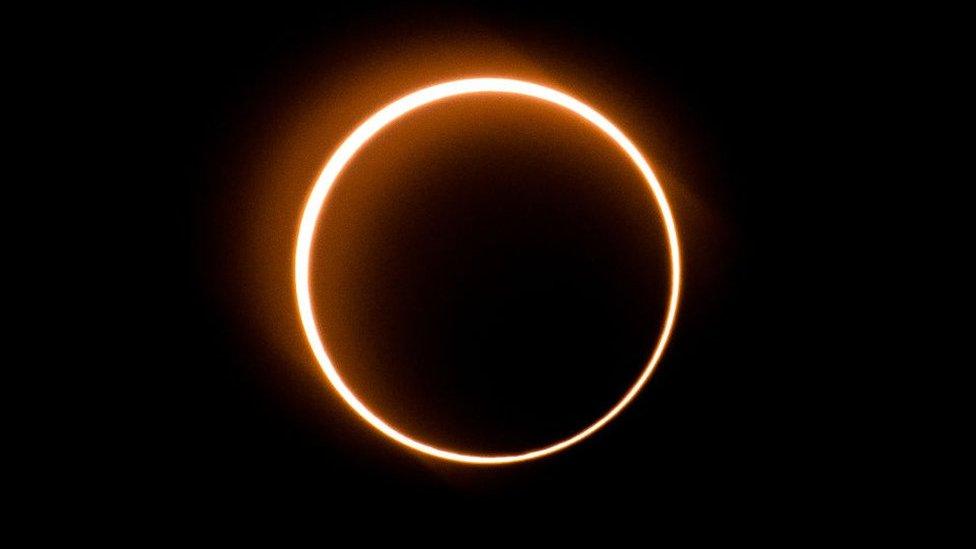
On Saturday 14 October a rare type of solar eclipse will take place.
Millions of people will be able to experience the annular eclipse - also know as a 'ring of fire' eclipse - as it crosses North, Central, and South America.
For an annular eclipse to happen, the Moon has to be at its furthest distance away from the Earth, so that it doesn't quite cover up the Sun, leaving a so-called 'ring of fire' around it.
Keep reading to find out more about the eclipse, how to watch it and when the next eclipse is coming to the UK.
What will happen?
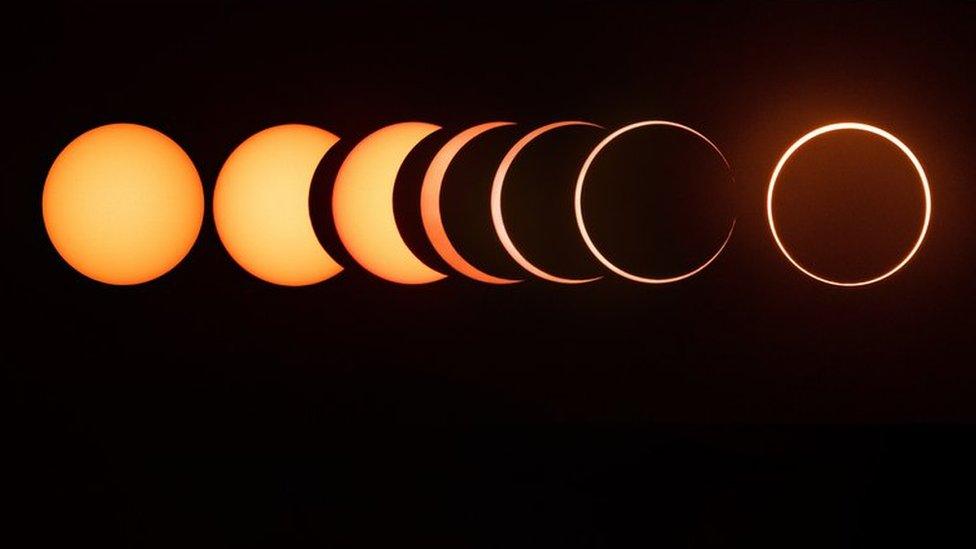
This photo show an annular solar eclipse from start to finish. It's made up of a number of pictures of the Moon from the beginning of the eclipse and continuing all the way until the ring of fire is formed
On 14 October the annular eclipse will begin its path on the west coast of the United States, in the state of Oregon at 0913 local time (1713 UK time).
It will then cross into Nevada before travelling across Utah, New Mexico, and Texas, as well as some parts of California, Idaho, Colorado, and Arizona.
The annular eclipse will then continue on to Central America - passing over Mexico, Belize, Honduras, and Panama.
It then crosses into South America in Colombia and northern Brazil before ending at sunset in the Atlantic Ocean.
It's important never to look directly at the Sun as it can permanently damage your eyes.
Keep reading to discover tips on how to safely watch an eclipse.
What is a solar eclipse?
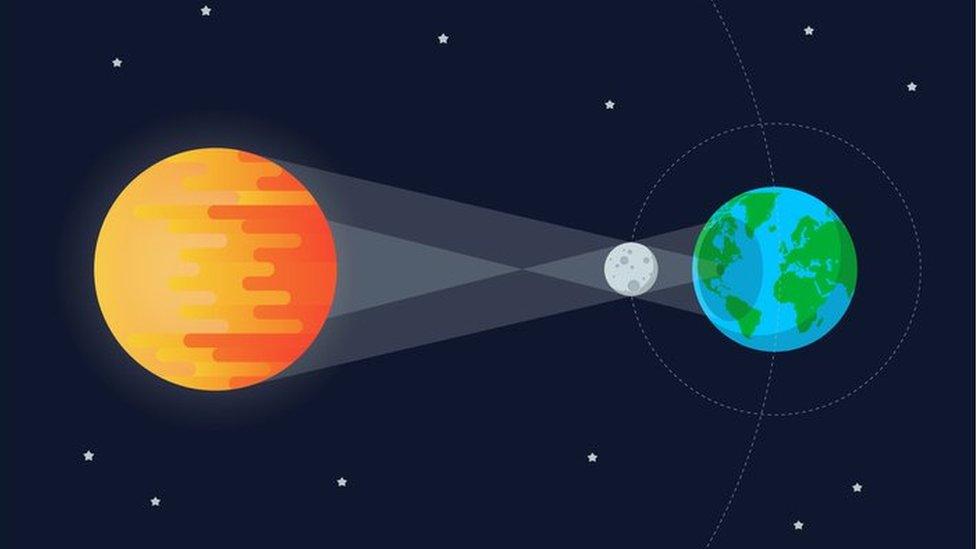
A solar eclipse is when the Moon moves between the Sun and the Earth, so it blocks the Sun's light.
There are three types of solar eclipse:
Total solar eclipse - This happens when the Moon completely covers the face of the Sun. This event sees the light from the Sun completely blocked out by the Moon.
Annular solar eclipse - This is when the Moon is not at its closest to the Earth so its diameter appears to be less than that of the Sun.
Partial solar eclipse - This is when the Moon only covers part of the Sun. This occurs when the Sun, Moon, and Earth are not perfectly aligned. It often looks like the Moon is 'taking a small bite' out of the Sun.
The type of solar eclipse depends on the positions of the Sun, Earth and Moon, as well as where on Earth you're watching it from.
What is an annular eclipse?
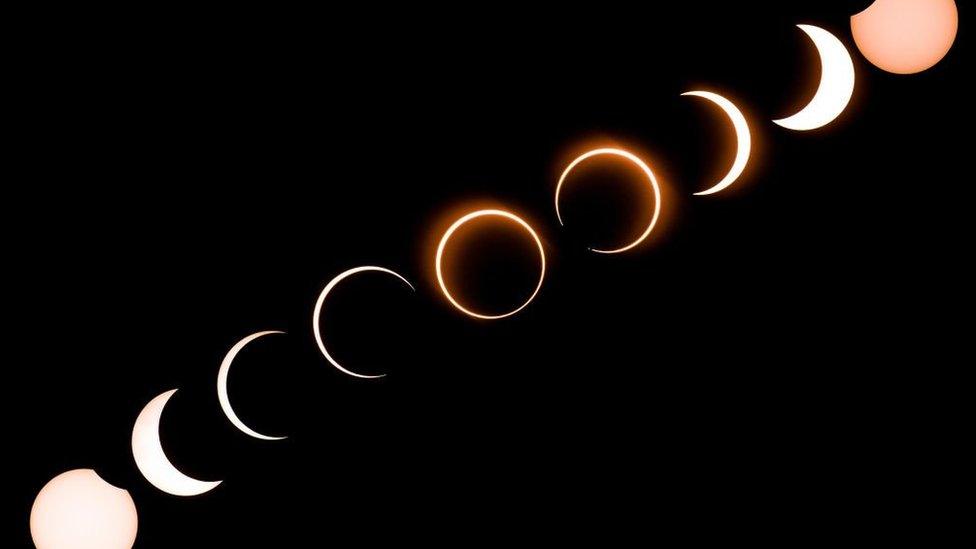
These photos show how the Moon moved across the Sun during a previous annular eclipse in 2019
An annular eclipse occurs when the Moon passes between the Sun and the Earth.
However for an annular eclipse to take place, the Moon needs to be at its furthest point away from Earth - so that even where the Moon obscures the Sun centrally - it appears smaller than the Sun and does not cover it completely, leaving the outer ring of the Sun still visible.
Will October's annular eclipse be visible from the UK?

October's annular eclipse will not be visible from the UK.
This is because the Moon is much smaller than the Earth, so its shadow only covers a small area of the Earth's surface.
As a result, any solar eclipse will only be visible from a certain part on Earth.
When will the next solar eclipse take place in the UK?
WATCH: Relive the incredible total solar eclipse from 2017 with BBC reporter Nada Tawfik
In general, between two and five solar eclipses take place on Earth each year.
Don't worry, you won't have to wait too much longer for the next solar eclipse if you live in the UK.
The next partial solar eclipse is due to take place on 29 March 2025.
The event will be visible across Europe, with as much as 47% of the Sun expected to be blocked by the Moon from the UK.
Solar eclipses can occur on other planets, not just our own!
Unfortunately, stargazers will have quite a wait on their hands for the next total eclipse in the UK.
That isn't scheduled to happen until 23 September 2090.
Tips on how to safely watch an eclipse
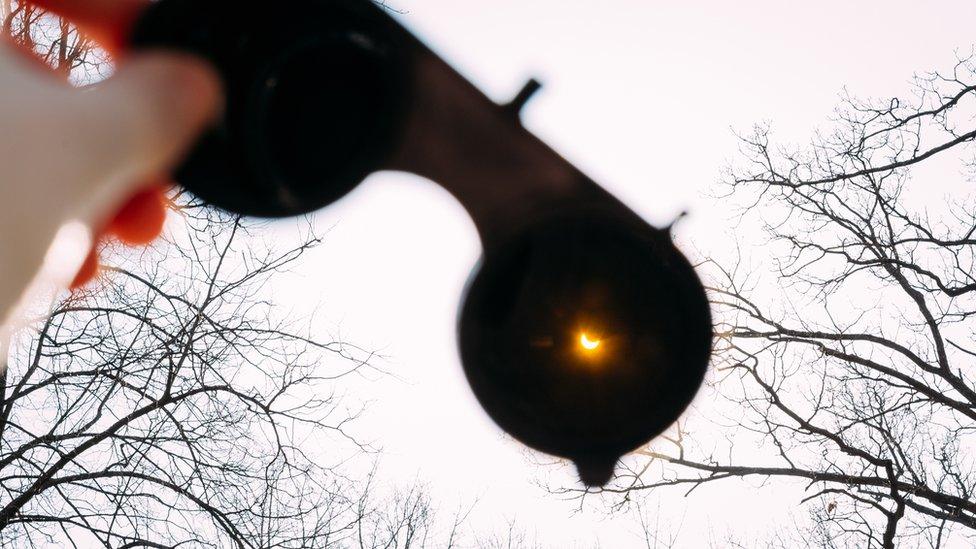
To view the eclipse you need special glasses - sunglasses do NOT offer enough protection and looking directly at the Sun can be very dangerous
Remember it's important to never look directly at the Sun as it can permanently damage your eyes.
Sunglasses do not offer sufficient protection either, so if you want to view the eclipse, ask your parents, or an adult you trust, about special protective eclipse glasses.
Another option to see the eclipse without looking directly at the Sun is creating a pin-hole projector.
WATCH: How to make a pinhole camera
To make one, poke a small hole into a piece of card. Hold the card up to the Sun so that light shines through the hole and on to a piece of paper behind the card.
You will be able to see the shape of the Sun projected on to the piece of paper and watch its shape change as the Moon passes in front of the Sun.
- Published29 September 2023

- Published11 June 2024


